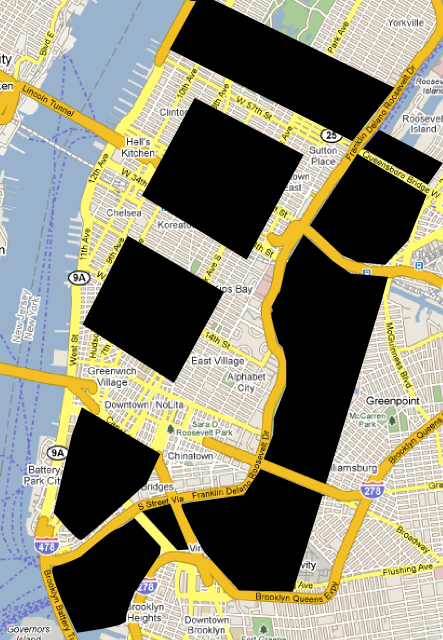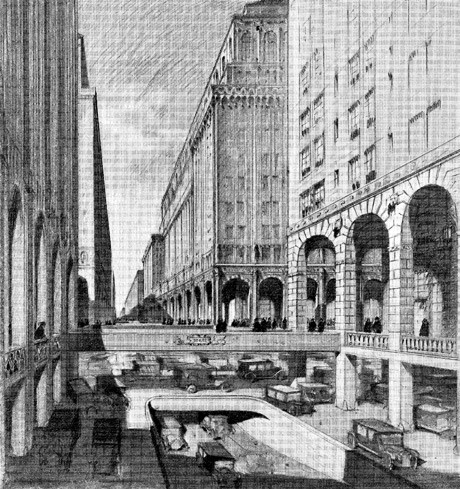Our old pal (and semi-recent collaborator) Mike Frumin has been doing some really interesting work on transportation statistics for the City of New York, and his most recent blog post is no exception. It’s about how many extra roads and parking lots you’d need to deploy on and around the island of Manhattan in order to accommodate the number of people that the subway moves every day, if they all wanted to drive:
At best, it would take 167 inbound lanes, or 84 copies of the Queens Midtown Tunnel, to carry what the NYC Subway carries over 22 inbound tracks through 12 tunnels and 2 (partial) bridges. At worst, 200 new copies of 5th Avenue. Somewhere in the middle would be 67 West Side Highways or 76 Brooklyn Bridges. And this neglects the Long Island Railroad, Metro North, NJ Transit, and PATH systems entirely.
Of course, at 325 square feet per parking space, all these cars would need over 3.8 square miles of space to park, about 3 times the size of Central Park. At that point, who would want to go to Manhattan anyway?
Mike thinks it’d look something like this:

where entire sections of town are given up to parking and roads, sort of like Harvey WIley Corbett’s designs for lifting cars off of the ground entirely:

and enormous bridges covering the entire surface of the rivers, like Gustav Lindenthal’s “”bridge apartment houses,” proposed in 1925:

